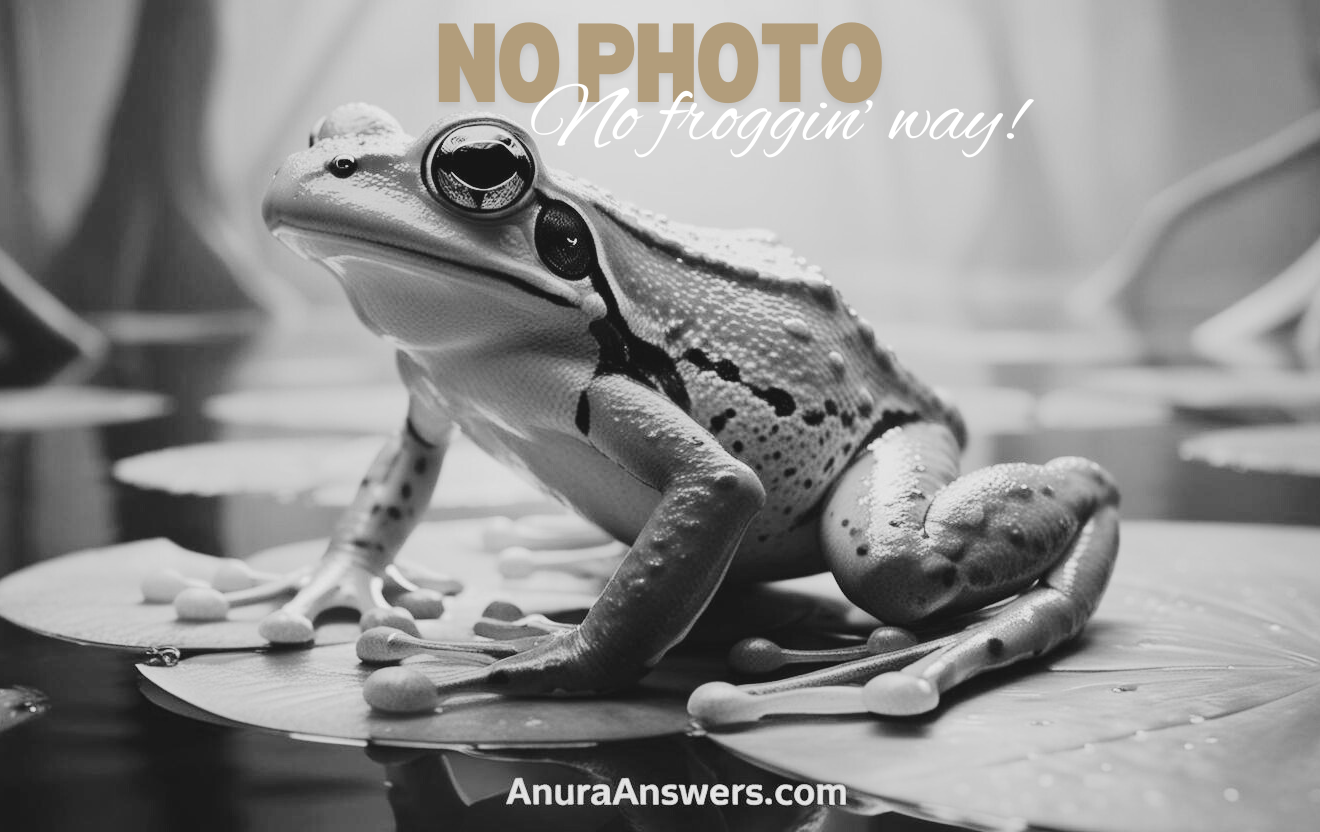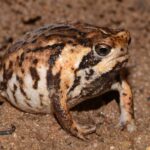- Unveiling the Elusive Schiøtz's Long-fingered Frog: Discovering Cardioglossa schioetzi
Unveiling the Elusive Schiøtz’s Long-fingered Frog: Discovering Cardioglossa schioetzi#
Hidden beneath the lush canopies and tangled vegetation of Africa’s West-central forests, a shy amphibian lives quietly—rarely noticed, seldom understood, yet remarkably adapted to its precise ecological niche. Known scientifically as Cardioglossa schioetzi, or fondly referred to as Schiøtz’s long-fingered frog, this species remains one of Central Africa’s charming natural mysteries. Despite its diminutive size, it bears significant ecological importance and offers researchers and wildlife enthusiasts continuous fascination. Named in honor of Arne Schiøtz, an acclaimed Danish herpetologist whose pioneering work shed light on the region’s complex amphibian life, Cardioglossa schioetzi encapsulates evolutionary finesse. So let’s embark on a journey into the secretive world of this intriguing little frog—unveiling its remarkable biology, enchanting behavior, and the critical urgency surrounding its conservation.
Taxonomy and Classification#
Cardioglossa schioetzi belongs to the family Arthroleptidae, a family distinguished by their unique reproductive and morphological characteristics. Within this family, it occupies the genus Cardioglossa, known commonly as the long-fingered frogs, famed for their elongated third fingers on adult males. Although several species within the genus exhibit similar traits, each possesses distinct characteristics, coloring, and behaviors that differentiate them. Notable close relatives include Cardioglossa gracilis and Cardioglossa melanogaster, yet schioetzi proudly claims its uniqueness through subtle—and scientifically compelling—traits.
Natural Habitat#
Geographic Range and Distribution#
Nestled primarily within the mountainous and forested regions of Cameroon and Nigeria, the range of Cardioglossa schioetzi is notably restricted. Its habitat spans across the biodiverse yet heavily fragmented montane forests of the Cameroon highlands and adjoining Nigerian regions. Throughout these territories, the frog has evolved incredibly selective habitat preferences, contributing to its vulnerability but also testifying profoundly to biological specialization.
Preferred Habitat Conditions#
Cardioglossa schioetzi is primarily terrestrial, choosing to inhabit the dense forest floor of subtropical moist lowland and montane forests. It thrives amid dense leaf-litter, lush mosses, and small, clear-water streams. This amphibian species skillfully enjoys humid microclimates, which sustain the delicate balance required for its sensitive skin to maintain moisture and optimal body temperature.
These forests represent ecological treasure chests, teeming with biodiversity, where each plant and creature plays an interwoven role. From the humid understory characterized by ferns, orchids, and lichens, and punctuated with small rivulets, to forest patches where fallen logs provide shelter, schioetzi expertly exploits subtle ecological niches. These shaded, moist environments enhance the frog’s adaptive coloration strategy, allowing effective camouflage against predators.
Physical Characteristics#
One glance at Schiøtz’s long-fingered frog reveals an amphibian deeply connected to its leafy, verdant habitat. Measuring between 20–30 millimeters in length, this tiny creature is expertly equipped to navigate dense forest spaces unobtrusively. Its slender body shape and elongated limbs—particularly the males’ conspicuously lengthened third fingers—aid in successful maneuvering along wet foliage and moss-covered substrates.
The frog’s coloration comprises rich earth tones such as olive brown, muted bronze, and subtle coppery hues, often tinged with dark spots or patterns resembling leaf veins. This coloration provides critical camouflage, effectively blending the frog into leaf litter and forest floor debris. Its smooth skin, punctuated by occasional wart-like tubercles along its dorsal area, further aids in camouflage, imitating the texture of decomposing leaves or muddy forest floors.
Notably, the eyes of Cardioglossa schioetzi are prominent, black or dark amber, and distinctly bulbous—perfectly adapted for crepuscular or nocturnal activity that characterizes its lifestyle.
Behavior and Life Cycle#
Feeding Habits and Hunting Strategies#
Quietly prowling its shadowy domain, Cardioglossa schioetzi depends on small arthropods as its primary source of sustenance. Ants, termites, spiders, delicate springtails, mites, and occasionally small beetles compose its diet, hunted skillfully using sharp eyesight and stealthy techniques. The frog employs patient ambush tactics, blending flawlessly into its surroundings before launching a swift, accurate predatory strike of its sticky, projectile tongue.
Reproduction and Breeding Behaviors#
The breeding festivities of Schiøtz’s long-fingered frog once again illustrate nature’s remarkable life adaptations. Every rainy season, specifically after prolonged downpours, male frogs vocalize courageously from under dense foliage near forest streams, performing a symphony of clicks and gentle chirps designed to allure females. These subtly melodious yet understated calls create gentle choruses that resonate through the otherwise quiet forest nights.
Upon successful courtship, females lay small clusters of delicate eggs in secluded niches, closely positioned to temporary forest pools or running streams. These moisture-rich environments ensure eggs remain protected and nourished during incubation. Eventually, the small tadpoles emerge, adopting an aquatic lifestyle limited primarily to sheltered streamlets or forest pools. Over time, the amphibious larvae undergo remarkable metamorphosis, transforming from fully aquatic tadpoles to miniature terrestrial frogs—fully prepared for a life in the leaf litter.
Ecological Role#
Though small in stature, Cardioglossa schioetzi exemplifies the crucial interconnectedness inherent within forest ecosystems. Amphibians like these play vital roles as both predator and prey, effectively regulating invertebrate populations while simultaneously sustaining larger organisms such as birds, small mammals, other frogs, and reptiles.
Additionally, amphibians globally serve as critical indicator species—sensitive measures of environmental health, reflecting ecological changes often unseen or unnoticed by casual observation. Declines in frog populations frequently signify environmental imbalance or degradation, emphasizing the importance of Cardioglossa schioetzi as an ecological sentinel within its unique forest habitats.
Threats and Conservation Status#
Emerging threats have begun placing substantial pressure on Schiøtz’s long-fingered frog populations. Rapid deforestation associated with agricultural expansion, logging, and human settlement has fragmented and degraded much of the species’ ideal habitat. Habitat fragmentation severely curtails the frog’s ability to find mates, reproduce, and maintain genetically diverse populations—thus exacerbating declines.
Climate change further compounds existing issues, altering rainfall patterns and increasing temperatures, impacting amphibians deeply dependent on precise climatic conditions. Moreover, amphibian diseases, notably chytrid fungus (Batrachochytrium dendrobatidis), present additional ominous threats to their fragile populations.
The International Union for Conservation of Nature (IUCN) classifies Cardioglossa schioetzi as Vulnerable, reflecting genuine concerns regarding ongoing population declines, severely limited range, and diminishing suitable habitat areas. Conservationists actively advocate preserving primary rainforests, enhancing habitat connectivity, and implementing stricter land-use policies to maintain surviving populations.
Cultural and Scientific Significance#
Although Schiøtz’s frog may not command the same recognition as charismatic mega-fauna species, its presence contributes significantly to local ecological heritages. Unique amphibians like schioetzi underscore the critical global value of biodiversity, underpinning intricate ecosystem functions imperative to Earth’s overall environmental stability.
Scientific research highlighting its ecological roles helps underline conservation priorities, serving as symbolic rallying points in promoting broader rainforest habitats protection. Additionally, frogs like Cardioglossa schioetzi could harbor yet-undiscovered biochemical insights valuable in medical or biochemical research, underscoring a tangible urgency associated with species preservation.
Conclusion: Our Role in the Future of Cardioglossa schioetzi#
Ultimately, this intriguing amphibian remains a testament to the extraordinary tapestry of life sustained within Cameroon and Nigeria’s rich forests. We are tasked collectively—scientists, students, wildlife enthusiasts, conservationists, and responsible citizens—with enhancing awareness, promoting research, and protecting remaining wild habitats so that future generations continue experiencing the quiet yet profound magic Schiøtz’s long-fingered frog brings to our shared world.










